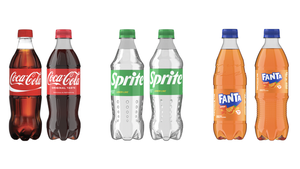Falling contracts with limited availability coupled with discounted rough wide-spec material has lulled some spot buyers into a false sense of comfort.
April 14, 2021

The start of a new month and quarter brought slight relief to the spot resin markets. Last week saw a steady flow of spot demand, with a well-mixed supply of truckload and railcar volumes, reports the PlasticsExchange in its Market Update. Buyers showed a bit of patience, taking some pressure off the top-side of the market and allowing resin prices to ease up.
Spot polyethylene (PE) averaged about $0.02/lb lower and varied by grade. Polypropylene (PP) prices, taking a cue from still sliding PGP monomer costs, backed off $0.04/lb this week and have now retreated $0.07/lb from at least the interim top. The rally might be tired, but a major down leg of the cycle does not yet seem imminent. The PlasticsExchange notes that it is trying to restock, but finding it difficult to find fresh domestic prime material.
With most resin reactors now restarted, a better flow of wide-spec cars are appearing in the market, including some higher quality off-grade and an occasional car of Prime. Although resin prices remain elevated, some softening made sense as the supply mend has begun and will eventually lead to a more balanced supply/demand dynamic, according to the PlasticsExchange. However, that will take some time, and the resin clearinghouse does not expect a huge and sudden sell-off, so a relief celebration would be premature. In the meantime, most producers remain under force majeure and allocations are intact. For the foreseeable future, prime production will primarily serve contract buyers and allow for some upstream inventory restocking.
Shifting trade patterns
Large cargoes of prime resin, and more PP than PE, have been sailing from the Asian region to US shores to supplement insufficient domestic production and also to Latin America to offset the lack of incremental imports, which generally come from the United States. Instead of importing resin from the United States as is customary, Chinese and other Asian traders have been exporting regionally produced material and depleting their own inventories, tightening local supplies and placing upward pressure on Asian resin prices.
The shift in trade patterns has also wreaked havoc on freight rates and cargo space and displaced empty containers, causing congestion and logistics delays. Rising international resin prices, along with expensive ocean freight, all while US prices are sitting closer to the top than to the bottom, have combined to limit new import deals. Most imported resin has been pre-sold, and while the import arbitrage is still open, substantially fewer new orders are being placed for material still sitting overseas, writes the PlasticsExchange, adding that this is likely to limit the volume of unsold lots seeking sales.
US resin supply remains constrained
While most reactors are now operational, a multitude of problems are still occurring and several are still challenged to consistently make prime resin. US PE supplies remain categorically tight, and all grades are still difficult to source in the spot market. High-density PE injection is scarce, especially high flow. Blow molding resin is very hard to come by, and low-density and linear-low-density PE film resins are relatively rare; injection and granular grades are virtually non-existent. Dribs and drabs of each of these commodity grades do become available, reports the PlasticsExchange, though the offers do not last long. Even as tight as the market has been, spot pricing, which sprinted well beyond contracts, might have gotten ahead of itself so premiums recently relaxed a little giving contracts a chance to catch up.
Resin producers have nominated April PE increases for as much as $0.09/lb. While the market has lost a little upward momentum, PE producers are known to be very disciplined and are masters at managing supply before a burdensome overhang can develop. Even as PE production continues to ramp up, the PlasticsExchange anticipates the emergence of a clever balance between inventory replenishment and renewed export sales to maintain upward pressure on domestic PE prices. The PE market has had legs and could potentially keep running — considering that all three previous 2021 increases have already taken hold for $0.19/lb, the potential success of the current April increase cannot be counted out.
Unprecedented PP resin environment
This PP environment has been like none other in our 20 years of making spot resin markets, writes the PlasticsExchange in its weekly report. The supply/demand imbalance that sent spot PP prices parabolic in February remains, and the undersupply is likely to continue for months ahead. However, PP contracts are comprised of two components: PGP monomer costs, which have been falling since March began, and production margins, which continue to expand as each nominated increase becomes implemented. As tight as the PP market still is, contract PP prices have started falling after enduring massive increases since June 2020, March PP contracts decreased a net $0.125/lb, which is after the $.06/lb margin increase, and April contracts are setting up for a similar result.
The new Plastic Possibilities podcast from PlasticsToday, "Resin Production Meets the Perfect Storm," is devoted to the impact of raw marterial shortages and rising prices in the US market. Supply-chain expert Ambrose Conroy, founder and CEO of business consultancy Seraph, shares insights on the forces buffeting the plastics resin market today and what we can expect to see in the weeks and months ahead. Listen to the 20-minute conversation here. |
The tricky part, notes the PlasticsExchange, is that few PP-buying processors are satisfied with the limited supplies that have been allocated per force majeure conditions. As processors compete to procure additional resin from very limited supplies, buoying spot prices, a huge gap has grown between lower contracts and much higher spot levels. This has not only been sustained, but the gap has actually continued to grow, even as spot has softened the past couple of weeks. Falling contracts with limited availability coupled with decently discounted rough wide-spec material has lulled some spot buyers into a false sense of comfort that the entire market is coming undone. Unfortunately, some have tried to wait this one out only to come back to find Prime availability just as tight or choice lots no longer available.
There is no telling exactly when enough resin will be produced and/or imported to satisfy both past short-filled and current contracts as well as fill normal spot demand, but when that does happen a larger portion of the huge spot premium will erode. However, as the PlasticsExchange seeks to build spot liquidity each new day, very little high-quality spot resin can be found, particularly prime that so many require. Those that are satisfied with allocated contract volumes are catching some relief, while those demanding PP from the secondary market are still paying historically high prices. They will continue to do so for the foreseeable future, with some slow easing along the way.
Read the full Market Update on the PlasticsExchange website.
About the Author(s)
You May Also Like


